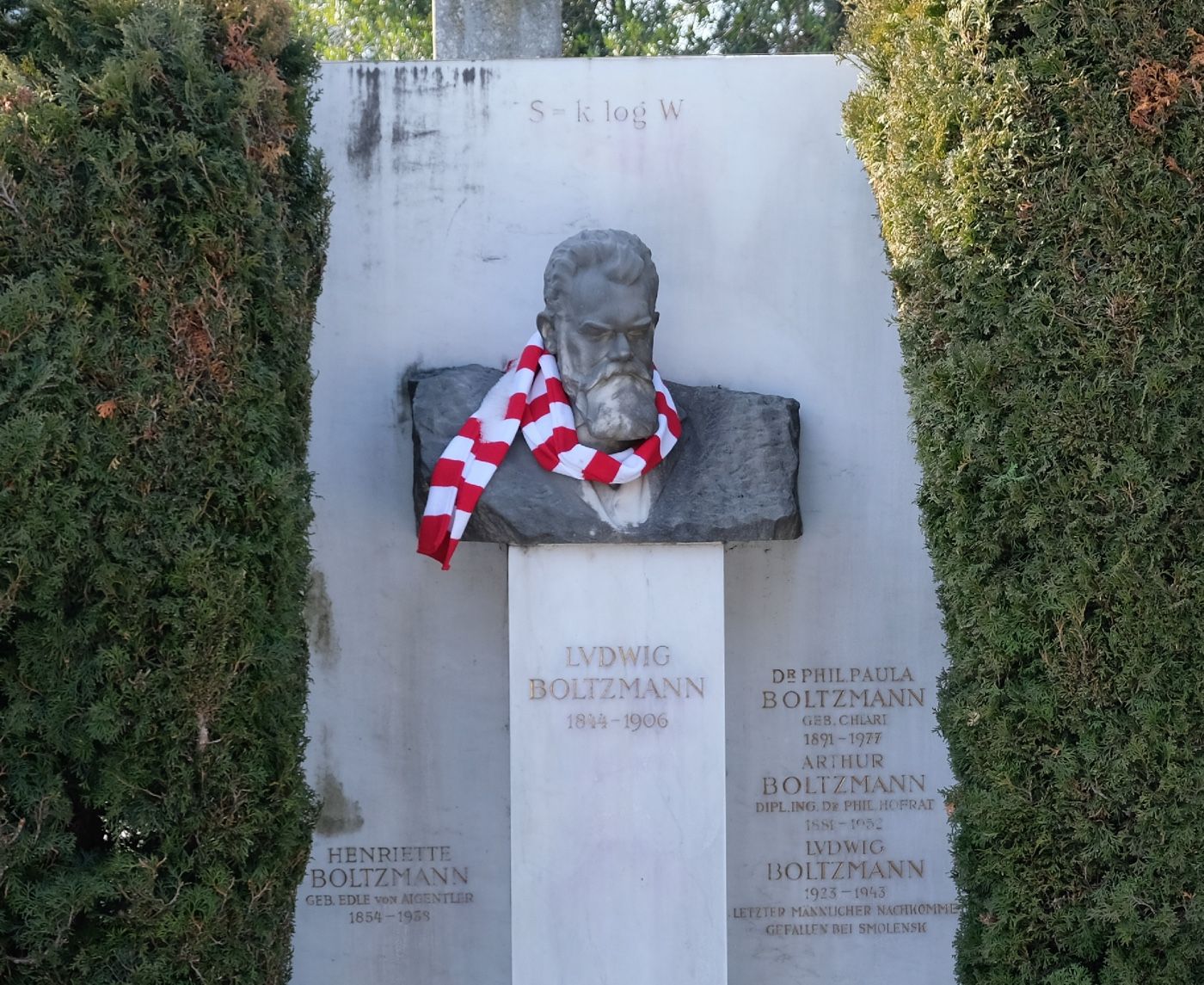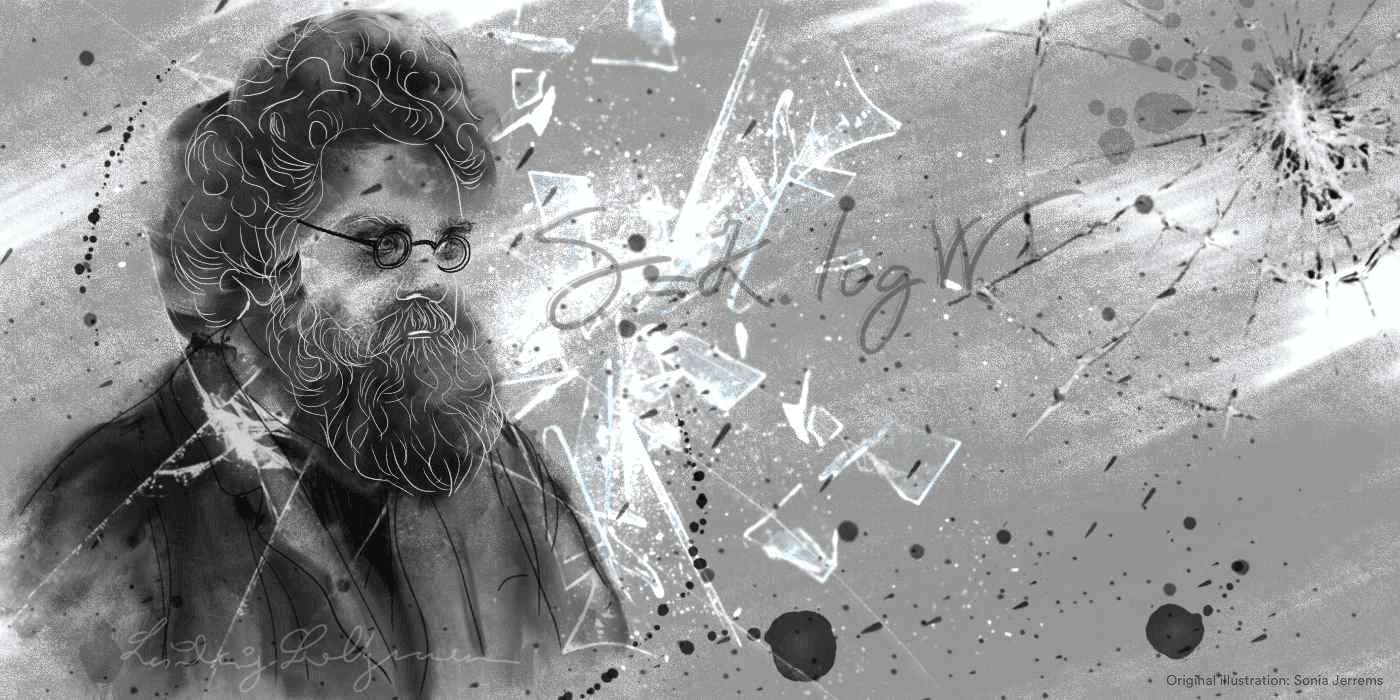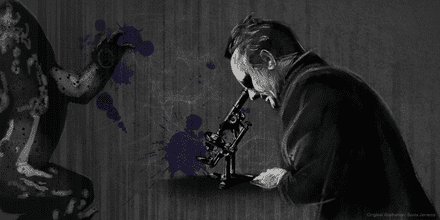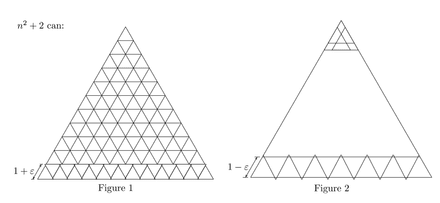Can a life be summed up by 𝑆=𝛋∙log𝑊? The equation is the slightly geeky inscription on the tombstone of Ludwig Boltzmann, Austrian physicist and pioneer of statistical mechanics.
The formula shows the relation between entropy and the probability of possible thermodynamic states of matter. It includes the constant 𝛋, later termed Boltzmann constant.
How can a lifetime’s achievement so fundamental (including a constant named after you for mathematical eternity) end in the tragic suicide of the name-bearer during a holiday in Italy?
The loss of stability in the world and in science
Ludwig Boltzmann’s birth set the stage for a somewhat restless life — he was born in the early hours after a Mardi Gras ball on shrove Tuesday in 1844. As a son of a tax revenue officer, an affinity for numbers may have run in his blood.
In the Austro Hungarian empire the political structures meant to be God-given started to crack
He grew up in what should be the last decades of the Austro Hungarian empire, during which those political structure and borders that were meant to be God-given for eternity started to crack, and rumors whispered that the perception of political stability may differ for those who do not benefit from it; that stability serves those who provide it but is not wanted by those who were forced into accepting it.
For the world of science, however, these were exciting times. Boltzmann was a contemporary of Georg Cantor, who threw the field of mathematics into uncertainty by his definition of infinity and the Continuum Hypothesis. Boltzmann was 15 years old, when Charles Darwin published Origin of Species. From all sides, science shook the foundation of a creationist worldview with its defined limits and borders. The world, and science, would never be the same.
It’s atoms that matter, and entropy that rules
Boltzmann studied physics at the university of Vienna and received his PhD for his work on the Kinetic theory of gases. The idea that the movement of small particles — atoms and molecules — defines the properties of matter, was highly controversial at the time. One of the main obstacles to its acceptance was the fact that molecules and atoms were not visible, so evidence could only be deduced.
The idea that the movement of atoms and molecules defines the properties of matter, was highly controversial.
Instead, positivism was strongly believed to be the correct scientific approach — proof requires underlying observable evidence, something ‘given’, or — in the words of one of Boltzmann’s main opponents, the positivist Ernst Mach: “Atoms? Have you seen one yet?”
In addition to the atomic size of his favorite study objects came their random behaviour, bouncing around uncontrollably, within the limits of constraining forces. Their positions can only be described by probability, making Boltzmann’s formula the first generalization of thermodynamic entropy. In contrast to any other unit, entropy measures the disorder of a system. Boltzmann showed further that this disorder is constantly increasing, irreversibly, essentially leading to inevitable randomness and decay.

Probability and the irreversibility of entropy
Similar to Cantor, Boltzmann therefore challenged the foundations of his field, proposing to accept that not everything can be defined and calculated with certainty, but some aspects can only be approximated with a certain probability.
Proposing that not everything in physics can be defined and calculated with certainty challgenged the foundation of his field.
These revolutionary thoughts emerged at a time of belief in God-given structures of matter and laws of physics. Boltzmann’s idea that matter, and all complex things — water, fire, life — were subject to entropy and probability, triggered an immense shift in the world of physics, but not without great resistance among colleagues, including Ernst Ostwald and Ernst Mach, two of his greatest opponents.
Another fundamental fact of thermodynamics echoed from the ivory towers of physics through society and its increasing political unrest before the end of the 19th century: entropy is irreversible, it almost always increases, making decay inevitable and unstoppable. Or, in short, disorder is always higher in the future, that we are spiralling towards.
Order, therefore, is determined from within, from the atoms and their behaviour, not from above.
A lifelong fight
“Speak the truth, write with clarity, and defend it to your very end.”
Personally, Boltzmann was not the glamorous rebel he may have needed to be to convince his opponents. Rather short and of stout figure, his wife called him endearingly her “sweet fat darling”, and in his scientific discussion he was referred to as a “bull” by his colleagues.
While he was scientifically ahead of his time and undoubtedly endowed with a brilliant mind, one of his major traits was his stubbornness, highlighted in his motto: Speak the truth, write with clarity, and defend it to your very end.
He did live loyal to these words, and spent most of his life trying to defend his theories, across European and American universities. He left his position at the university of Vienna to get away from his opponent and personal enemy Ernst Mach for Leipzig, upon invitation of Ernst Ostwald, who was also a scientific opponent but a personal friend.
Disorder and death
Boltzmann’s health had been subject of concern throughout his life, with bouts of manic activity and wild enthusiasm followed by periods of severe depression, indicating what would be diagnosed as bipolar disorder today.
After an unsuccessful suicide attempt due to ill health and depression, Boltzmann returned to Vienna after the turn of the century and Mach’s retirement.
He lived in constant fear of “suddenly losing his mind and memory during a lecture”
Soon after his return to Vienna, his health further declined, along with his mental state. He lived in constant fear of “suddenly losing his mind and memory during a lecture”, suffered from asthma and headaches, and was too short sighted to read by himself. In 1906, his physician attested that he suffered from neurasthenia and had to abstain from any scientific activity.
He hanged himself four months later during a holiday with his family in Duino, near Trieste, Italy, without leaving a note.
Epilogue: acceptance and breakthrough
Shortly after his death, his ideas achieved wide acceptance with the help of Max Planck and Albert Einstein
In a dramatic epilogue to his life, Boltzmann’s theory achieved the deserved breakthrough and acceptance among scientists only shortly after his death, with the help of Max Planck and Albert Einstein. Both scientists realized their potential; Planck had been doubtful for a long time but in the end had to succumb to Boltzmann’s methods as he failed to find another way to prove his own radiation formula.
Although it is not certain whether lack of wider acceptance of his theory led to Boltzmann’s suicide, continuing the fight for just a little bit longer may have spared his daughter the horrible discovery of his death.
But then, maybe it was his personal way to stop entropy in its tracks — or to ultimately accept it.

About this series
This series is about the tragic lives and deaths of three Austrian scientists who shook the foundations of physics, mathematics and biology.
They opened their mind to a world beyond the boundaries of what was accepted at their time. Their controversial and dangerous ideas led them to the question: is this world still worth living if you’re alone in your grasp of something ungraspable?



